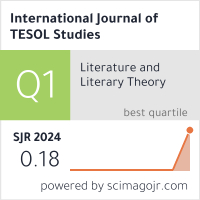2632-6779 (Print)
2633-6898 (Online)


Scopus
Ulrich’s Periodicals Directory (ProQuest)
MLA International Bibliography
MLA Directory of Periodicals
Directory of Open Access Journals (DOAJ)
QOAM (Quality Open Access Market)
British National Bibliography
WAC Clearinghouse Journal Listings
EBSCO Education
ICI Journals Master List
ERIH PLUS
CNKI Scholar
Gale-Cengage
WorldCat
Crossref
Baidu Scholar
British Library
J-Gate
ROAD
BASE
Publons
Google Scholar
Semantic Scholar
ORE Directory
TIRF
China National Center for Philosophy and Social Sciences Documentation
Somi Shin
Embry-Riddle Aeronautical University Asia, Singapore
Abstract
University students often write a literature review as a standalone assignment, or part of research papers to fulfill the course requirements. To write a good literature review, students must be able to apply critical thinking in every step of the way. The most challenging part in literature review for many students, from my observation, is the evaluation of the articles for their strengths and weaknesses. This is a critical step in literature review, as students should be able to identify gaps in the past studies and find the direction and contribution of their own papers, based on the evaluation. The objective of this study is to test if the critical thinking skills of students in higher education improved throughout a course by examining the literature review assignments submitted to fulfil the course requirement. I discuss how I introduce the concept of critical thinking in the process of writing literature review for undergraduate students at a private university in Singapore. The students attended the Introduction to Research Methods course, where they write a proposal for quantitative research, which includes a literature review section. I evaluate the effectiveness of the classroom activities designed to enhance critical thinking skills, by comparing the draft literature review with the final version. 144 students attended the course over approximately two years and worked in groups of two to seven. In total, 31 student groups submitted 62 literature reviews. To decide the level of critical thinking demonstrated in the literature review, I use Bloom’s Taxonomy. The results from t test, Wilcoxan-signed-rank test and ANOVA show that critical thinking skills in the final version improved by approximately two Taxonomy levels, compared with the draft.
Keywords
Literature review, critical thinking, writing skills, research methods, Bloom’s Taxonomy, Singapore